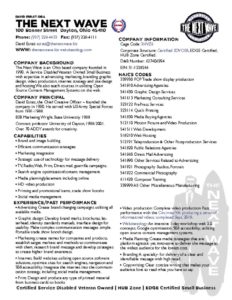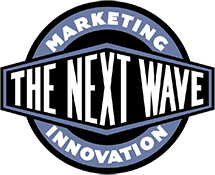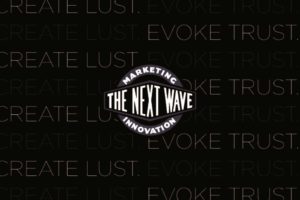This was our first National Veterans Small Business Engagement conference/trade show. We weren’t alone, there were a lot of people there for the first time and some were overwhelmed. This is a big event, with a ton of opportunities. We thought we’d put together a guide for next years attendees, (in Dallas) and we’re asking the people we met to contribute their tips and tricks as well.
This year, the VA decided to hold the SAME conference at the same time. This caused a little bit of confusion since each show was run under different contracts and had different ways to access data. The SAME folks had a smart phone app, the NVSBE team had a mobile friendly website. As developers, we think that the proper way to do this is with a mobile friendly site, but then again, we’re not the ones billing the government- apps cost more 🙂
We’re assuming your business is a going concern, and that you’ve done the normal dance of registering with the government and Dun & Bradstreet. If you need a checklist,:
- For small businesses that are beginning to market their services and products to government agencies, you can try local resources like SCORE or PTAC (Procurement Technical Assistance Centers) and your local SBA office.
- Obtain a DUNS (Data Universal Numbering System) Number from Dun & Bradstreet at https://www.dnb.com which is required for registration in SAM (see next item).
- Register on the System for Award Management (SAM) https://sam.gov/SAM, if your firm is registered keep the registration current by updating yearly. The FAR (see below) requires that a firm be registered on the SAM to receive a contract award.
- Know the North American Industry Classification System (NAICS) code and the Federal Supply Classification (FSC) code for your product or service. Most federal procurements are listed by their NAICS or their FSC code. Small business size standards vary by different NAICS codes.
- Complete any certifications which may be required (see Federal Acquisition Regulations (FAR) Part 19).
- If you are a Service Disabled Veteran Owned Business, register and get certified by the VA. If you are a HUBZone, do so with the SBA.
- If you have a GSA schedule, you are already ahead of all of us, and have completed all of the above. Start the process of getting a GSA Schedule here.
1. Pre-conference preparation
These may be the most important steps you take. I’ll cover conference tips in general first and government contracting tips second.
Go to LinkedIn and make sure your profile is up to date. Have a current photo, title, and most importantly make sure you have your contact info in place. Look spiffy and have a custom URL for yourself.
Set up a contact card on your phone that you can share with people via text or email. Here’s a great post from PC World on how to do this for both Android and iOS. Yes, we print business cards very inexpensively and think you should have them, but, contact cards are fast and easy, and make it easy to stay in touch with folks while they are at the show.
We’re not against you registering for a Gravatar, which attaches a photo to your email address online for CRM systems and guest posting, like on this site.
Check your website to make sure that it is both secure (https) and mobile friendly (look at it on your phone, if it looks like your desktop view and you can’t read it- it’s not). This is Google’s advice since 2014 and not only will it help you get better search results, it’s just good web practice. If you don’t see the little green lock or HTTPS at the beginning of your site, you can call us- we help build websites that work.
Search for your business on Google and find your Google local/Google my business listing. It will be on the right of the search results on desktop- and make sure that you’ve claimed your listing. Put your hours in, your business description, photos of your office, etc. Manage any reviews- and most certainly ask your clients for reviews. This mostly applies to businesses that aren’t global in scale- but, is still a critical practice. You want people to be able to find you on Google maps etc.
Have some collateral materials, eg. brochure, flyer, handout. Something that someone can have in their hand that sums up everything they need to know about your business in a glance. Yes, your website can do this, however, people are going to meet so many folks their heads will be spinning. Something that’s unique, branded, clear, and preferably a good filing size is highly recommended. We can help you with design and printing. Depending on your business, these can be hard to craft, we highly recommend that you don’t create a laundry list of bullet points. Tell a story, make people feel good about working with your company, explain your successes. No one wants to read a checklist.

Click image to download David Esrati, DBA The Next Wave Marketing Innovation capabilities statement as a PDF
The government types want a “capabilities statement” and they want it in a very specific format. We’re including a link to a Word Doc checklist from the Department of the Interior, and a copy of ours, which has hyperlinks. The key is to have your critical government info in the top right corner- ie CAGE Code, DUNS number, what socio-economic programs that your business holds, and contact info. If you are a SDVOSB- make sure the logo is on it at the top, it’s like a bullseye for contracting officers. There is no logo for HUBzone, but there is for 8(a) and may be for others. We made ours a pdf (we never recommend sending word docs) and it has links built in. You should have printed copies of this, with your business card stapled to it so they don’t lose them (this from a contracting officer).
If you are going to go to a conference as an exhibitor, you’ll need to plan for a way to meaningfully capture potential customer information. The drop your business card in a fishbowl approach is one way, but, for conferences of this size you want to use the badge scanner to collect data of your booths visitors. And while promotional items are nice, most conference attendees have limited luggage space to haul your bounty back. Our advice is always to offer things that can be shipped to the “winner” and be valuable enough to make it interesting. Sure, that little spray bottle of hand sanitizer may be handy at a conference, but, do I need it once I’m back in my office? How many pens, bottle openers, small USB drives, pop-sockets (yeah, that’s an actual thing) do I need? Even the one useful item I brought back- a USB charging cable that had 3 different types of charge plugs, isn’t going to be among my favorite memories of a conference. Give me a trip to Hawaii- I’ll be forever grateful. Think about the value of customer acquisition- and make the prize equal to the cost of a major contract lead. Remember, these things aren’t last minute, and need real lead time to plan.
I saw a multitude of trade show displays at NVSBE. There were three hard hat dive helmets on display- I’m guessing each company did underwater construction work, but, what do I really remember about their organization? There was only one truly creative booth- where a group of businesses representing “The Space Coast” got together to create “Bourbon Street” as an area to interact with potential clients- without having a table in front of them. If you are doing banner stands, our prices can’t be beat, and if you want a more extensive booth, we can help with that too- but, remember the most important thing: your booth isn’t a brochure- it’s more like a stage set. Don’t put laundry lists of services on it. No one wants to read your capabilities statement in the middle of a busy trade show aisle. If you have video- have closed captions, because no one wants to listen to your 3 minute video repeating all day long. Even though the show started on Halloween, the days of trade show candy as a way to pull people in are over. We’re already eating too many rich foods thanks to the event catering. Unless you make or sell food- giving it away isn’t going to bring the kind of customers you want. However, one exhibitor had a keg of craft beer- which got them a great line, but, probably not great interactions.
2. Pre-conference planning
Visit websites of federal agencies that your firm is interested in doing business with to learn about what kinds of projects are needed by the agencies.
Look for their Forecast of Procurement opportunities and identify which opportunities best match your capabilities.
Attend agency Small Business Outreach events and agency sponsored Matchmaking sessions. Individual agencies Office of Small and Disadvantaged Business Utilization (OSDBU) websites will have a listing of the time and location of the events. Some of this is as simple as the conference registration software matching NAICS codes. This is why early registration is important- so you have time to pre-plan and research each agency you are going to meet with.
Visit FedBizOpps, https://www.fbo.gov/ , the Government’s single point of entry portal for contracting opportunities regularly. It will also send you alerts for opportunities matching your NAICS codes. However, the reality is, that most of the time, by the time an RFP hits FBO, there are people already in line for the contract and you probably are late to the party. Remember, contracting officers are usually turning to FBO after they can’t find a firm with a GSA schedule to do the work.
Pursue Subcontracting opportunities. There are various subcontracting opportunities that are available. There is not a single point of entry for subcontracting. SBA’s SUB-Net, is a resource for information on subcontracting opportunities. Warning: the SBA login functions are horrendous. Many small businesses come to these conferences not looking to land a federal contract, but to become part of a bid with a large prime contractor. When you’re a small business, almost every company there could be a customer, partner, or vendor to you. Make sure you come to the conference with an open mind and open arms. If you are an SDVOB or HUBZone business- large contractors have subcontracting goals. They can sometimes be very welcoming.
Look closely at the list of attendees, learn about other companies that you think you can work with. I had 2 meetings the day before the conference with CEO’s of companies with a lot more experience than me in the area of federal procurement
3. At the conference
If you go with a group of co-workers, don’t go to the same sessions, don’t sit at the same tables, and don’t talk to the same people unless you need to. The idea is to make as many contacts as possible. Introduce yourself at every opportunity, and if you stand up in a session to ask a question, state your name, business name and really fast elevator pitch- you have the microphone, use it.
When you sit down with Government personnel emphasize that your firm is able to respond quickly to solicitations and that your firm is ready to perform the work when and if you are awarded a contract. It helps if you know what they are in looking for in advance.
Build a positive working relationship with the Small Business Program Office of the agency you would like to do business with. This means try to sit at their table at a lunch, not just at the one-on-ones.
If you are in a session that’s not very good, get up and find another. Always try to have a plan B. You only have so many hours at the conference.
Many times large companies host evening events at nearby hotels. Try to wrangle your way into them. If you want to look like a large company- host one. Just be aware, this isn’t where business is first on the agenda.
Take notes on everyone you meet. If you have a CRM, this is the time to use it. Enter in the details of your conversations, and notes to help you build the budding relationship.
Be a connector. Try to bring people together that you think can benefit from working together. Karma is your best friend at trade events.
4. Post Conference
While you can start connecting on LinkedIn at the conference, it helps if you add some details to your invites about how you can help your best targets in your note with your invite.
Put together a package to email to your prospective contacts. For me, an invite to read and contribute to this post, and watch the video we put together is part of the way of building relationships. For you, rely on your notes to make things as relevant as possible.
Determine which agencies are the best fit for your company, and try to arrange follow-up meetings when you’re not part of a cast of thousands.
Write your own after-action report to help plan for the next year.
If you found this post valuable, please, take the time to comment, and add any other suggestions you may have for other first time NVSBE attendees.

